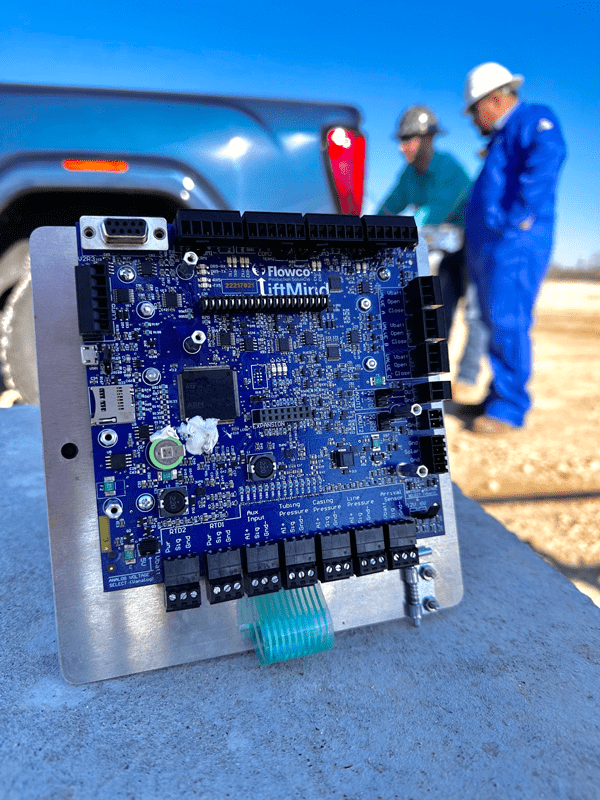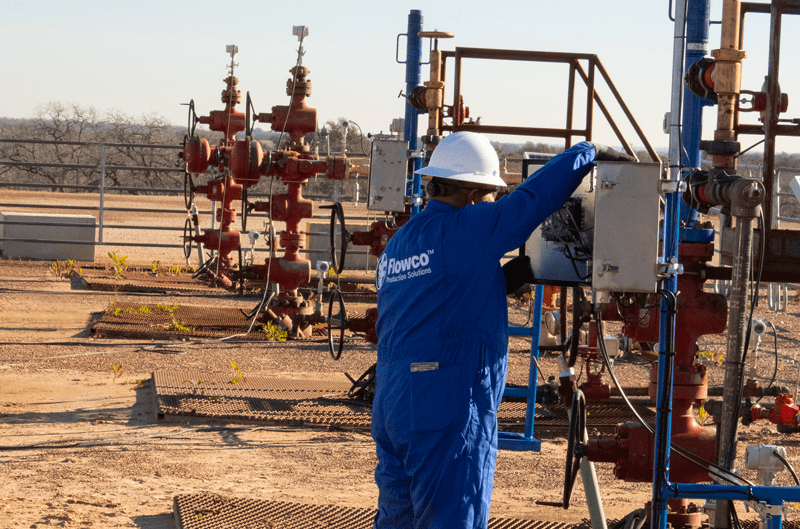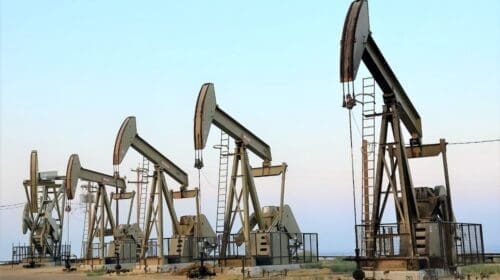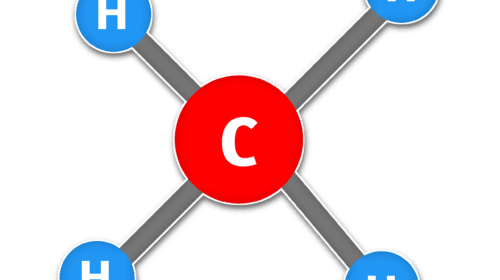While the oil and gas industry continues to evolve, the path forward has undergone its own course of development. In today’s economy, fiscal responsibility is critical while operators explore technological advancements to drive efficiency. Now, profit making is driven through select funding and catalyzing innovative technology to overturn inefficiency in specific problem areas.
Encompassing multiple facets of operation, the oil and gas industry depends upon each to seize increased profits. When downtime surfaces due to equipment failure and additional operating costs rise proportionately, net profits are negatively impacted. One area, in particular, that suffers from these operational obstacles is well optimization.
Well optimization reigns as the practice of enhancing well production or increasing hydrocarbon recovery from wells while mitigating downtime and lease operating expense (LOE). The course has grown in popularity as it fits directly into the new oil and gas strategy. While many exploration and production companies refrain from developing new plays and fields, they directly focus on maximizing returns from their existing producing well portfolio.
“Well optimization focuses on restoring wells to their natural decline curve,” says Mitch Boyd, vice president of Plunger Lift for Flowco Production Solutions. “Sometimes, the practice can even increase production when compared to the initial flow of the well.”
According to Boyd, well optimization utilizes artificial lift to increase production and Flowco is focused on both gas and plunger lift applications. The challenges associated with these applications often involve integrating the two applications to meet the needs of the assets which can be sporadically located within a field. In areas like the Permian Basin, well optimization is applied to wells with great distances between them. Other formations, like the Bakken, offer challenging landscapes to maneuver when visiting and studying different well sites. As a result, profits can become compromised with the time spent traveling between and managing these production sites.
Flowco has long been a valued service provider to the oil and gas industry, specializing in plunger lift and gas lift, as well as commingled applications. Through dedicated research and development, the company has introduced the APEX Multi-Well Controller™ that harnesses artificial intelligence (AI) to offer a well optimization strategy that eases the obstacles interfering with optimization success. The controller offers a more precise monitoring and control system for plunger lift, gas lift, and GAPL/PAGL lift methods, capable of overseeing up to 16 wells.
“AI almost makes the APEX Controller human in the sense that it carries out actions that a human used to have to do, and the automation greatly increases efficiency,” says Boyd. “The system allows us to monitor well parameters with greater accuracy and perform more precise troubleshooting which leads to optimum well performance. The APEX Multi-Well Controller brings highly advanced algorithms to well optimization efforts for either an individual well or a pad of connected assets.” To guide their decisions, the controllers compile aggregate field data from locations and add NextGen optimization features embedded in the firmware. Of course, the operator has the flexibility to use the intelligence built into the system or custom set the parameters of each well and make manual adjustments as desired.
Enabling Integration
Oil and gas companies call upon various technological solutions to ensure well performance and optimal production rates. Selective services are abundant with the information developed for the task and improvements that continually find an introduction. Multiple options exist for artificial lift utilization depending on the expected outcome and the formation making up the asset.
Flowco supports the digital transformation of oil and gas operators by introducing technology that digitizes field assets, provides detailed and critical production data, and automates operational approaches to achieve the most outstanding results possible. Not only does this control and monitoring platform accomplish these goals, but it takes the procedure much further in responding to previous well optimization deficiencies.
“The system has the capability to optimize each well regardless of lift platform,” Boyd says. “For example, the controller can optimize gas injection on a GAPL well based on plunger velocity and simultaneously optimize a second gas lift well based on critical velocity of production or flowing bottom hole pressure.” The automation provided frees up a significant amount of productive time for the engineer or field tech to attend to other critical tasks.
In gas lift optimization, natural gas is injected at high-pressure rates into the well-bore and combined with produced fluids located in the reservoir. While liquid load pressure is decreased, production increases. The APEX Multi-Well Controller optimizes gas-lift operations on critical velocity or based on live data from a downhole gauge.
Plunger lift uses the well’s natural energy and/or injected gas to produce fluids. “Previous technology had limited capabilities to optimize GAPL/PAGL systems,” says Boyd. “The Apex Multi-Well Controller focuses on GAPL and PAGL wells using a patented algorithm. Simultaneously, the software facilitates optimal gas lift injection rates based on advanced gas lift algorithms.”

With its advanced development and use of AI, the APEX Controller vastly improves integration. It can control the operation of both gas lift and plunger lift solutions simultaneously and through a single platform. With well optimization often being stifled by limitations in compatibility and high costs, Flowco provides an innovative solution. Many production engineers may prefer to manage their wells manually until they become comfortable with the Controller’s optimization features. The new Controller supports everything from complete manual operation (taking only input variables, performing calculations, and outputting the results for action by someone) to fully automated control where all the user needs to do is set the target rate. The firmware will find the rate quickly by automating changes without additional user input.
Operators now have the ability to take individual well snapshots and apply the best artificial lift option specific to the make-up of that well. Individual well solutions can venture away from limiting and monolithic designs. The APEX allows for different solutions to be controlled by one master controller and smaller expander units that control each well autonomously and update the master either through a wireless or wired solution. This provides endless possibilities for integration.
“In addition, the Multi-Well Controller’s benefits can be magnified by pairing it with downhole pressure and temperature gauges. Having that downhole information lets the Controller see exactly what is happening in real time, where production enters the well, and track the flowing bottom hole pressure performance,” Boyd says.
With the current theme of decreasing costs to drive up profits, the APEX assists in managing that workflow. Flowco instituted a highly specialized automation platform within the APEX, making it customizable and flexible to interact with current SCADA systems on well sites. Instead of driving up customer expenditure in replacing equipment and technology, the APEX reigns much like a bolt-on accessory that immediately communicates with existing systems.
As a solution-providing technology, the APEX combats a common problem incurred with production systems. While optimizing wells, many wellsite specialists experience issues with wells plagued with declining or erratic production. Commonly known as “loading up,” water or gas, and sometimes a combination of both, accumulates in the tubing and hinder production. The end results include a trained individual being called to the wellsite to rectify the issue.
“Technicians used to have to sit on well sites for hours on end unloading wells,” says Boyd. “Now they can do it remotely when using the APEX Multi-Well Controller.”
The APEX calls upon a patented algorithm to enable cycle-injection skip adjustment technology in both gas-assisted plunger lift systems and plunger-assist gas lift solutions. This technology involves a methodical process of optimizing gas injection as needed, based on plunger velocity.
According to Boyd, “The APEX Controller captures all the critical data needed to optimize a well efficiently. Each piece of data to be captured and relayed to the user can be programmed up to one second intervals.”
When fine-tuning a well’s performance, not only do companies realize gains in production earnings, but costly downtime decreases as well, and maintenance costs dissipate. Additionally, optimized wells that run efficiently increase the life of the equipment. “The capital savings this approach provides can be significant,” Boyd reports. “The uplift varies, but for an operator who goes from manual control to automation, it’s realistic to see a 20 to 30 percent increase in production and a 20 percent decrease in injected gas volume.”
Closing the Gap
The industry continues to take a more frugal approach to CAPEX and OPEX while technology addresses some of the other issues producers face; one such challenge being the vast sizes and conditions of the different terrains associated with formations and plays. Companies often encounter efficiency challenges associated with increased travel time. As technicians travel to each location, the time spent traveling between each site draws a large portion of the expenditure allotted and limits valuable optimization time. Companies immediately feel the squeeze when accounting for problem wells demanding multiple visits and extended troubleshooting sessions.
The APEX Multi-Well Controller provides a solution with its remote capabilities and ability to wirelessly enable users to view data trends, configure or modify existing set points from wherever they are. While the controller can service a single well, the ability is built within to control an additional fifteen wells. Expanding from one-well coverage to a system of multiple wells involves the installation of an expander, or communication device, which is easily added. With such advancement in automation, technicians can concentrate on numerous wells and their performance from an individual location. The cost and potential exposure associated with covering vast segments of real estate have become a problem of the past.
“The APEX is cutting-edge technology that accounts for a lot of the issues operators face when optimizing plunger lift and gas lift wells,” says Boyd. “This controller allows the user to save both time and money and can then revert capital where it better serves the company.”
Planning for the Future
While current technology answers the call and seeks to solve current issues, new problems will evolve, and the response campaign will repeat. Understanding this notion is a significant factor in the oil and gas industry, and Flowco planned ahead with the APEX Controller’s ability to offer continual support and functionality and scalability. As SCADA systems continue to be influenced by the demands of the market, with even more data to guide them in the analyzing and decision-making processes, the APEX accounts for this trend.
Being ready and able to accept new information and integrate with existing and newly formed systems is significant in keeping well optimization costs down. Instead of the end user deciding to buy new software and then being faced with finding a compatible artificial lift automation solution, the APEX and its AI remain staged to integrate with whatever the customer decides to use in production enhancement strategies.
The APEX’s ability to be equipped with expandable memory and communicate with new systems as they are installed in the field provides a better adaptable automation solution.
The APEX Multi-Well Controller capability with its multi-platform integration ability makes it a well automation system that functions as a response to popular shortfalls that have cost customers time and money in the past.
“I wish this technology would have been available when I began my career in the field years ago with artificial lift,” says Boyd. “It sure would have made life easier.”
Nick Vaccaro is a freelance writer and photographer. In addition to providing technical writing services, he is an HSE consultant in the oil and gas industry with twelve years of experience. Vaccaro also contributes to SHALE Oil and Gas Business Magazine, American Oil and Gas Investor, Oil and Gas Investor, Energies Magazine and Louisiana Sportsman Magazine. He has a BA in photojournalism from Loyola University and resides in the New Orleans area. Vaccaro can be reached at 985-966-0957 or nav@vaccarogroupllc.com.
Oil and gas operations are commonly found in remote locations far from company headquarters. Now, it's possible to monitor pump operations, collate and analyze seismic data, and track employees around the world from almost anywhere. Whether employees are in the office or in the field, the internet and related applications enable a greater multidirectional flow of information – and control – than ever before.












